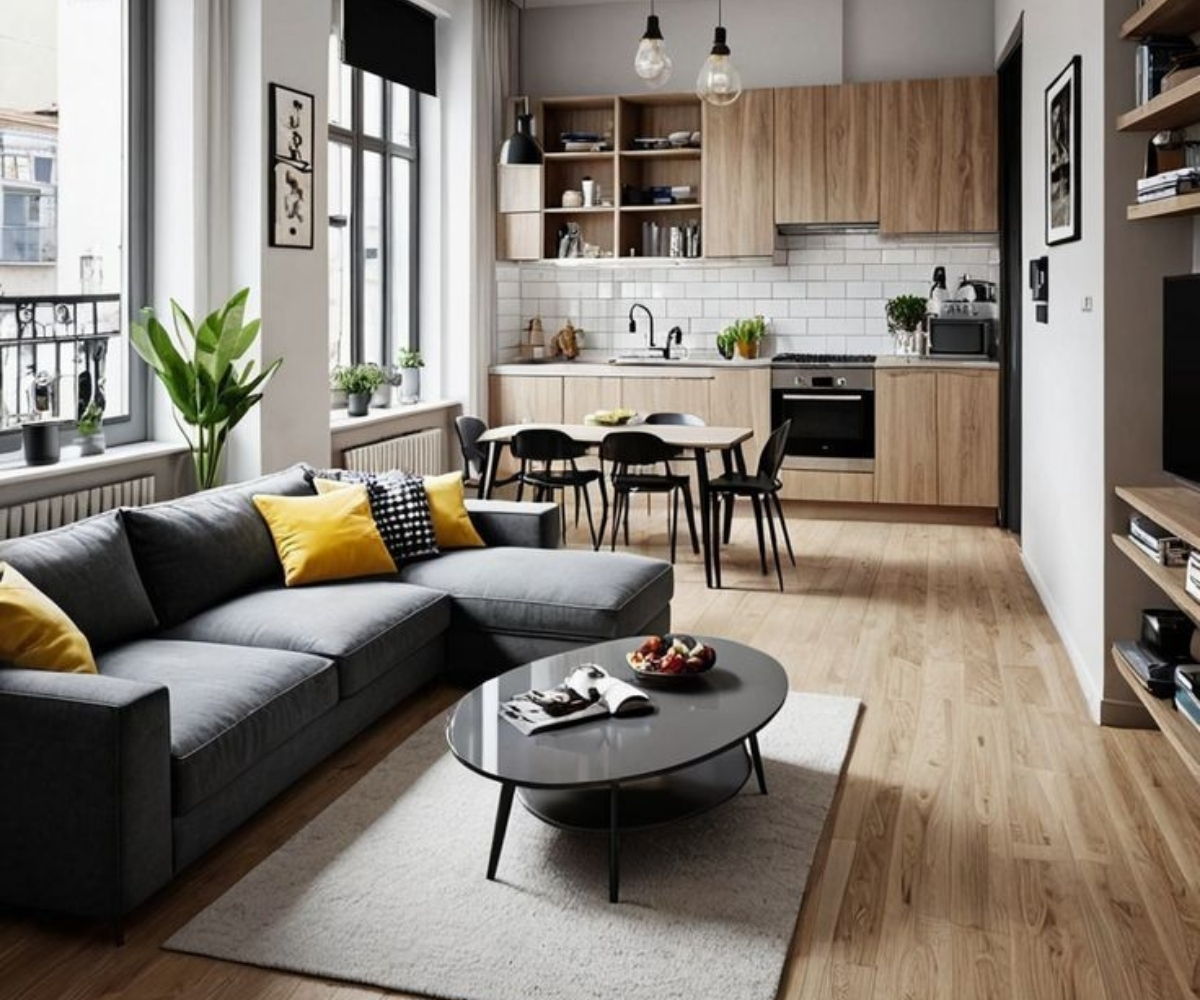Innovative Study Room Design Ideas to Inspire Young Minds
A thoughtfully designed study room can transform the way kids learn, explore, and create. Creating a dedicated space free from distractions not only boosts concentration but also fosters a positive environment for academic and personal growth. Here are some tips and ideas to design a study room that sparks creativity and nurtures a healthy learning habit.
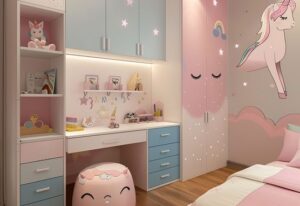
1. Plan an Organized Layout
Start with a clear layout that suits the room’s dimensions. A well-organized space, whether large or compact, allows every corner to serve a purpose. Design the layout to encourage easy cleaning and to minimize clutter. A minimalistic approach can help make a small room feel more expansive and efficient, reducing distractions and boosting focus.
2. Choose Mood-Boosting Colors
Color has a profound impact on mood and concentration. Opt for hues like soft greens and calming blues to create a serene environment. These shades can be used on walls, accented with creative wallpapers that might feature themes your child loves—whether it’s outer space, ocean adventures, or a vibrant fantasy world. Neutral backgrounds also provide a perfect canvas for bright accessories and inspiring artwork.
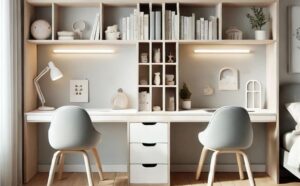
3. Invest in a Study Table and Ergonomic Chair
A comfortable study table and a supportive, ergonomically designed chair are crucial for your child’s health and focus. Select furniture that fits your child’s size to ensure proper posture and comfort during long study sessions. Look for surfaces that are easy to clean—think stain-resistant and non-allergenic materials. Adding a durable rug can offer extra comfort, and having versatile seating options can accommodate those moments when a change of posture brings a refreshing twist to study time.
4. Add Personal and Inspirational Décor
Personalize the space with decor that inspires and motivates. Display posters of favorite superheroes, motivational quotes, or artwork that resonates with your child’s interests. LED decor lights or soft ambient lamps can create a soothing vibe, while a whiteboard provides a space for brainstorming ideas, practicing lessons, or jotting down quick reminders. Consider incorporating elements of nature through biophilic design—small potted plants or botanical prints not only add color but also bring a refreshing touch of the outdoors.
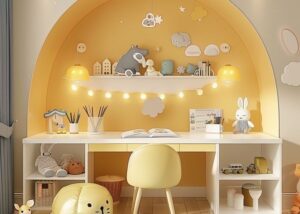
5. Prioritize Effective Lighting
Good lighting is essential for a functional and inviting study room. Maximize natural light by positioning the study desk near a window, and supplement with task lighting such as desk lamps or overhead LED lights. A layered lighting approach can help adjust brightness levels to suit different activities, be it reading, writing, or creative projects. Consider fixtures that are both stylish and practical, enhancing the room’s overall atmosphere.
6. Ensure Ample Storage and Organization
An organized space can greatly influence a child’s ability to concentrate. Incorporate smart storage solutions like wall-mounted shelves, pen holders, and dedicated compartments for books and stationery. Consider including a defined area for digital devices, ensuring cables and gadgets are neatly tucked away. A designated storage unit for school supplies and collections, such as a bookshelf for favorite storybooks or comics, can instill good organizational habits and make tidying up an engaging activity.
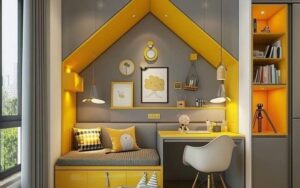
7. Include a Versatile Bookshelf
Bookshelves are not only functional but also serve as a visual centerpiece. They provide a special spot for treasured books, inspiring reads, and collectibles that fuel your child’s imagination. Whether designed as built-in units or freestanding shelves, they add character and support a habit of reading and exploration.
Final Thoughts
Designing a study room for kids involves considering functionality alongside inspiration. With a well-planned layout, mood-enhancing colors, ergonomic furniture, personalized decor, ample natural lighting, smart storage, and a dedicated reading nook, your child’s study space can become a sanctuary that nurtures both learning and creativity. Take the opportunity to involve your child in the design process—this collaborative effort can make the space not only beautiful and efficient but also truly their own. Happy designing!




